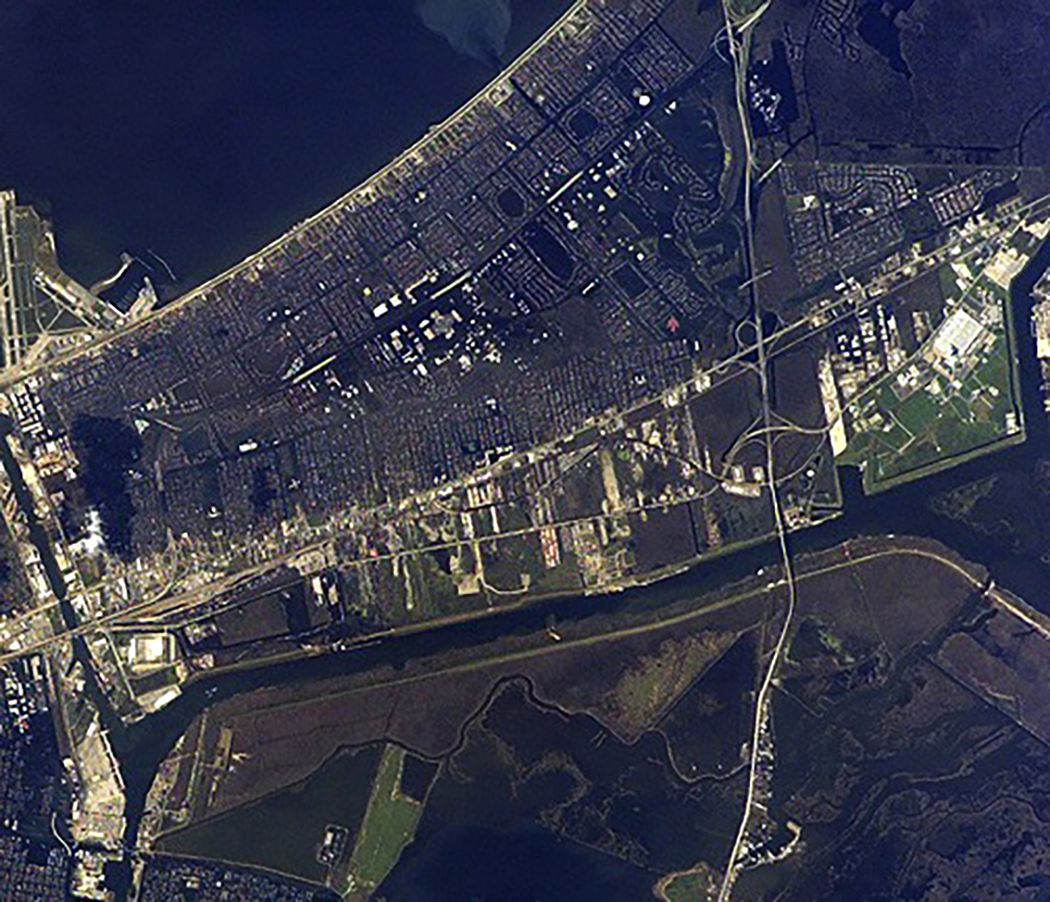When Hurricane Katrina made landfall almost 10 years ago, two of NASA’s facilities were hit hard. NASA’s Marshall Space Flight Center was a leader in the recovery efforts for Michoud Assembly Facility in New Orleans and played a key role in recovery efforts for NASA’s Stennis Space Center near Bay St. Louis, Mississippi.
Michoud, a world-class manufacturing facility, is NASA-owned and managed by Marshall. During Katrina, Michoud was responsible for manufacturing the large external tanks responsible for powering the Space Shuttle Program. Today, Michoud supports several major NASA projects, including the Space Launch System heavy-lift rocket and Orion spacecraft. Michoud also houses many tenants, including the U.S. Coast Guard, local fire and police departments and many more.

“Katrina was an incredible learning experience for the entire federal government,” said Carole Valenti, Marshall’s emergency management director. “The entire Gulf Coast region was hit hard during the storm, but thanks to preparation, resources and some amazing teamwork, both facilities were able to recover.”
In the days following Katrina, Marshall teams helped restore communications and power to both facilities, and delivered supplies to recovery teams and on-site personnel.
In the decade since Katrina, Valenti acknowledges hurricane preparedness has been greatly improved, with the emergency management teams at Michoud and Marshall continually enhancing and improving plans and systems, learning from past experiences. Marshall and Michoud team members began preparations for the 2015 hurricane season, which begins in June and continues until November earlier this month. Meetings were held with Michoud and local leadership, tenants and local emergency personnel to review and update communication, evacuation and other plans for potential severe weather over the next few months.
“Our plans are ready,” Valenti said. “We know who our teams are, what their roles are and what we’ve got to do once the situation presents itself. Now we stay ready and alert.”
Marshall and Michoud team members, with the help of the National Weather Service, track possible hurricanes as they develop off the coast of Africa — long before they make it to Gulf Coast.
“There are many variables in forecasting the trajectory and severity of storms,” Valenti said, “but we start tracking and communicating early so we can be prepared when the time comes to act.”
Most storms weaken or change course before making landfall, but when a storm still presents a threat a week before projected landfall, the Emergency Operations Center at Marshall begins 24/7 shifts. “That’s when we go into action,” Valenti said. “We begin gathering resources and coordinating with the Crisis Action Team and those who could be affected.”
At Michoud, a crew of approximately 30 individuals, who are prepared to “ride out” any storm, also begins their preparations. If, as the storm draws nearer, evacuation is necessary only the ride-out crew will remain at the facility. Other key personnel and backups are evacuated to a safe, alternate location where they will wait out the storm until they can assist.
After evacuation, the ride-out crew finalizes the preparations for the storm’s arrival and keeps the facility operational through the storm.
Once the hurricane passes, the ride-out crew begins the recovery process until back-up teams arrive. They work to stabilize the facility and perform high-level damage assessment. Communication is funneled through Marshall’s EOC, where Marshall team members relay Michoud’s status and needs with NASA Headquarters and other agency field centers.
“We have recovery crews and plans in place,” said Steve Turner, Michoud emergency management director. “Once the storm passes, their work begins.”
In 2005, the day after Katrina made landfall, Marshall security personnel and engineers were airlifted to Michoud to set up emergency communications and aid in damage assessment. Supply runs continued for weeks after the storm, with recovery aid coming from all over the country.
“After Katrina, we received aid from every NASA agency,” Turner said. “Fuel, water, clothes, repair materials, water purification teams, communication teams and much more. Everybody pitched in — it was a real team effort.”
Storms that strike Michoud aren’t the only ones Marshall is concerned with during hurricane season. In the event of a damaging storm, Marshall would not only manage recovery efforts at Michoud, but if needed, the center would also aid in the recovery of many other agency facilities and serve as a backup location for many crucial NASA operations.
“Marshall has a lot of the agency’s core support systems and there is plenty we can do to aid in recovery and even back up operations when needed.” said Valenti. “Information technology centers, financial centers, help desk support and more could be moved to Marshall. We’ve prepared space for the other centers to move their operations here and not miss a beat.”
One critical operation that Marshall is prepared to support is Mission Control for the International Space Station — based at NASA’s Johnson Space Center in Houston. In the event a hurricane forced a long-duration closure, Mission Control could move to Marshall’s Backup Control Center, located in the Payload Operations Integration Center.
Mission Control first relocated to Marshall in 2008 after the destructive Hurricane Ike made landfall in Texas. The powerful storm caused the evacuation of Johnson, sending the team to Marshall where they worked alongside Marshall’s payload controllers for almost five days, executing critical operations, including the docking of a Russian Progress resupply vehicle.
Whether their role is one of management or support, Marshall and Michoud emergency management team members have one goal during hurricane season. “As a facility, as an agency and as a team, our goal is to keep improving,” Turner said. “We take what we learn each year and incorporate it into what we already knew. We plan, we prepare, we learn and we stay ready.”
For more information about NASA’s Michoud Assembly facility, visit:


























